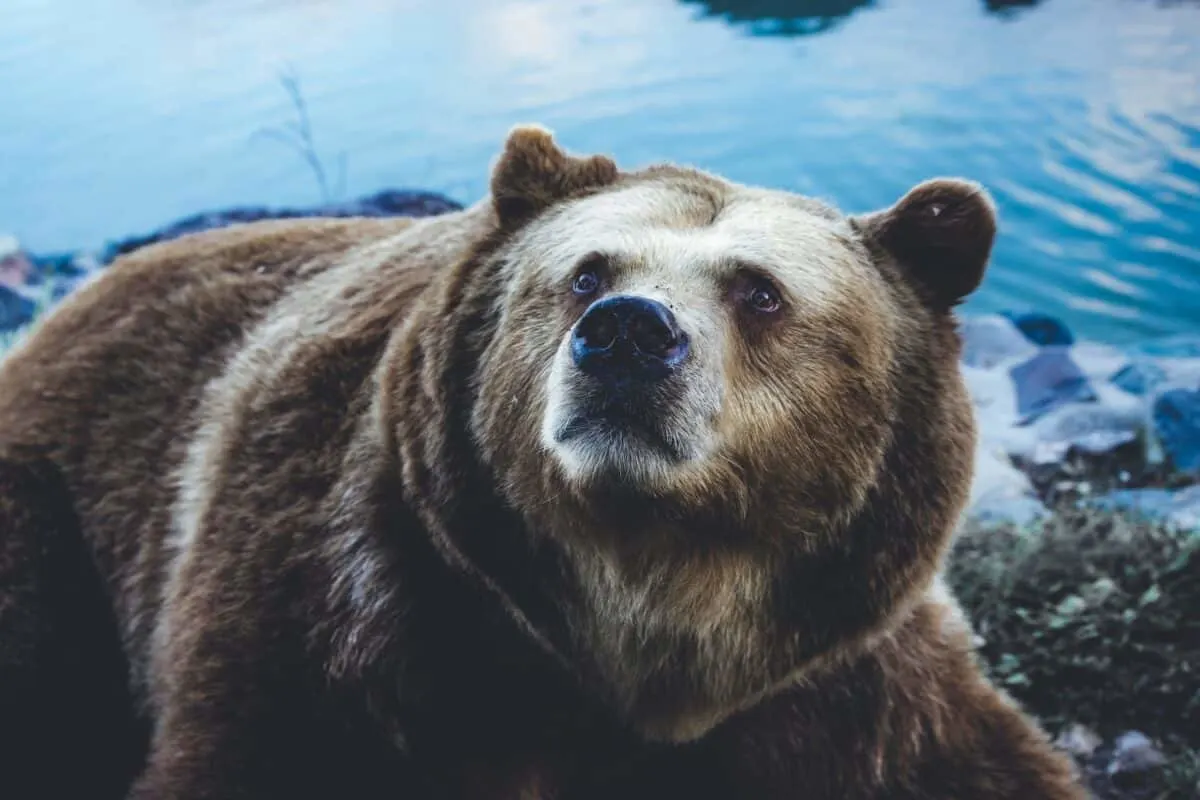Bears have captured people’s attention and fascination for centuries. One aspect of bear biology that may not immediately come to mind when considering these animals is their poop. Believe it or not, bear poop can reveal astounding information about these creatures and their environments.
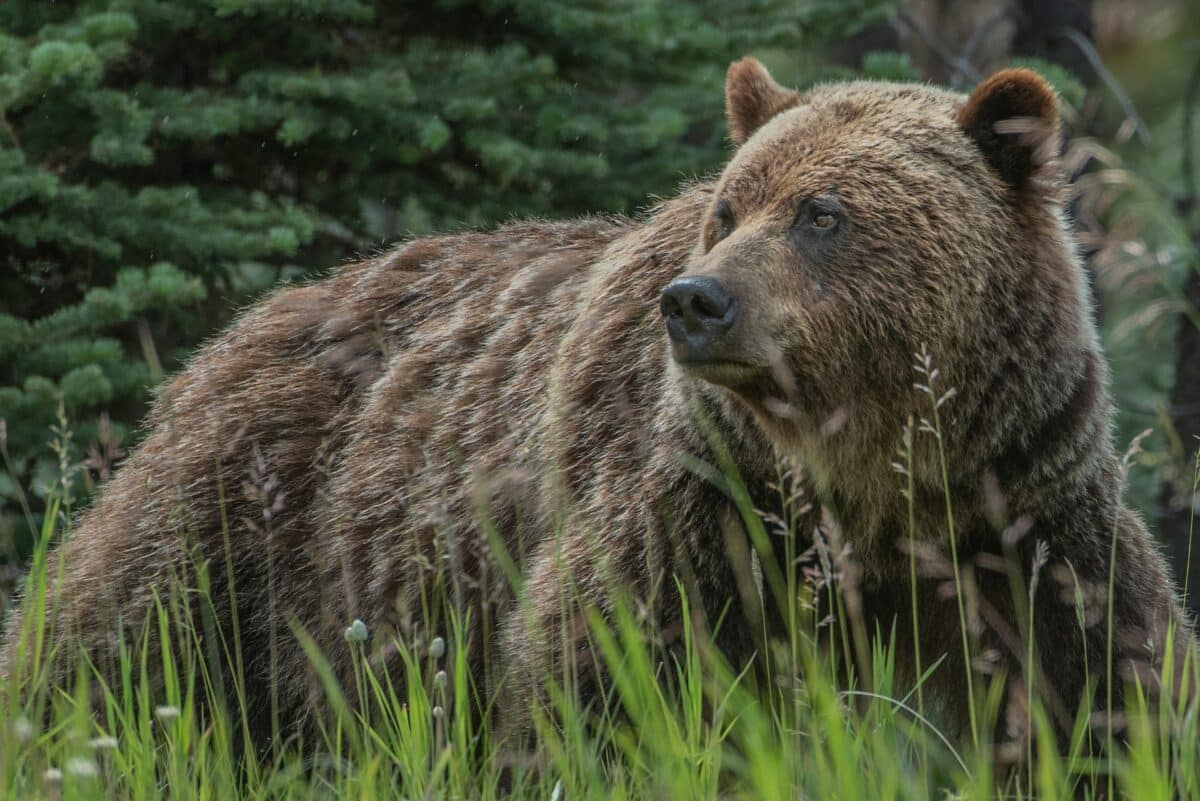
This article will examine the different bear types and their corresponding poop characteristics. We will also review the information that can be deduced from inspecting bear scat, including diet-, health-, and genetic analysis. We will also discuss the impact of bear scat on the environment and how it is managed in human-bear interactions.
Let’s become bear poop experts!
An Introduction
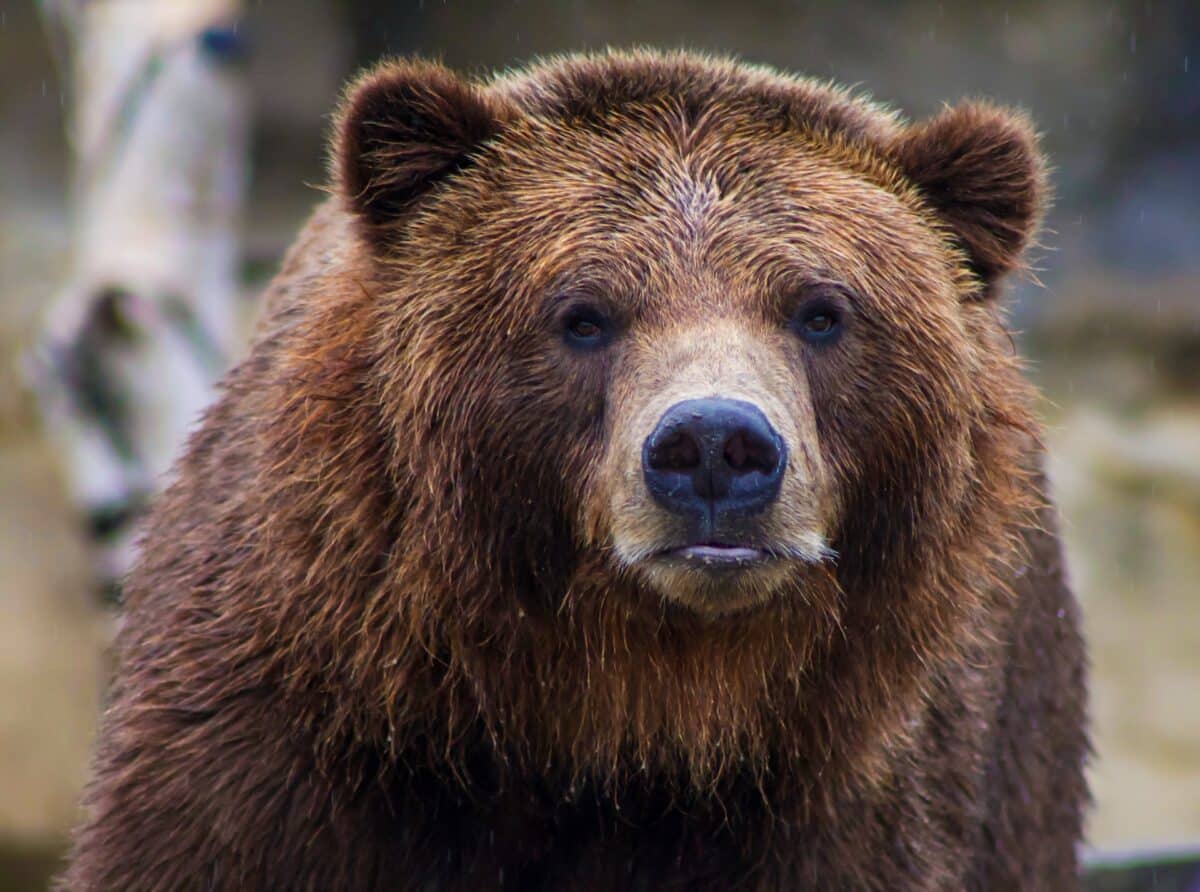
Bear poop, also called bear scat, is the excrement bears produce. It can consist of various types of plant matter. This includes leaves, stems, and fruit, as well as undigested meat, bones, and fur from animals the bear has eaten.
It is typically large and cylindrical and contain evidence of the bear’s diet and activity. It proves a valuable tool for wildlife researchers and biologists.
Importance of Studying Bear Poop
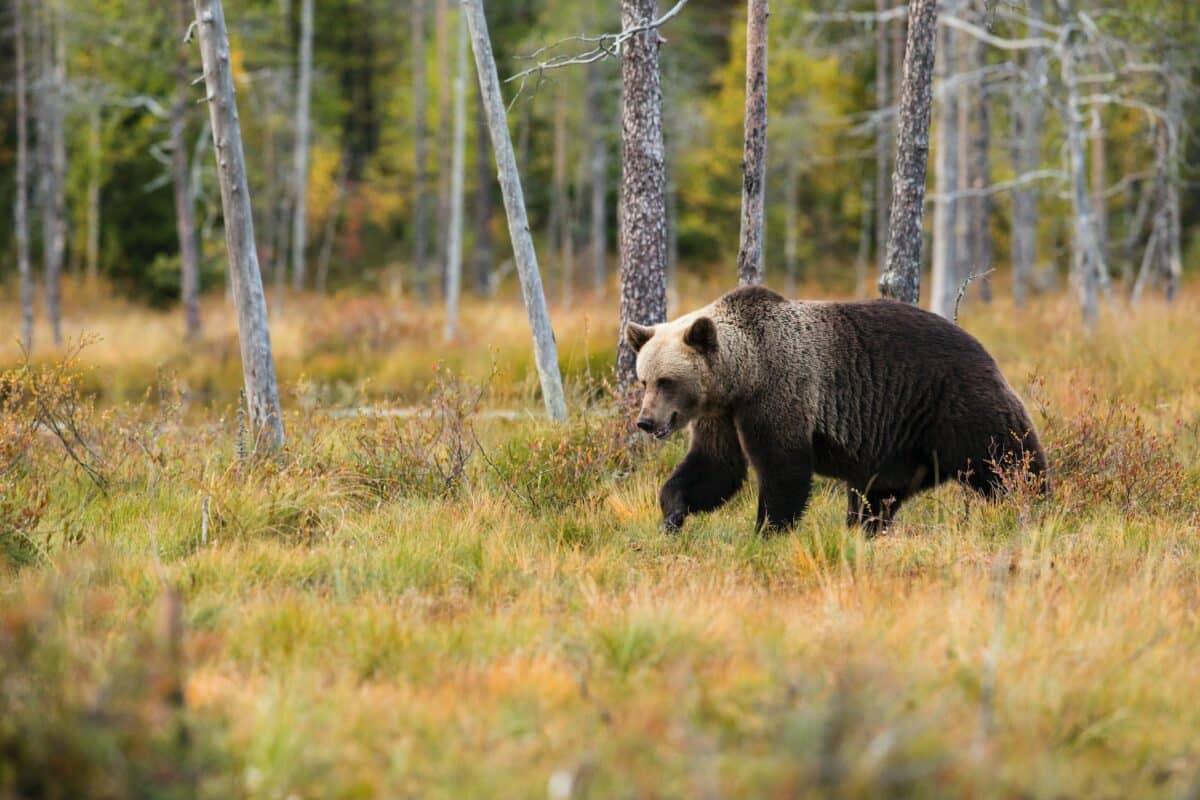
In addition to providing insight into bear populations and their diets, studying bear poop can also give us information about the overall health of the bear. For example, changes in the scat’s size, shape, or consistency can indicate potential health problems, such as digestive issues or parasites.
Moreover, studying bear poop can also help us understand bears’ impact on their environment. It can show how much of a specific plant or animal species is being consumed. In turn, this can help determine the effects of bears on these populations. This information allows us to make informed decisions about conservation efforts and land management.
In short, studying bear poop is an integral part of understanding and managing bear populations. It provides a non-invasive way to monitor the health, diet, and impact of bears.
Whether you are a wildlife researcher, biologist, or simply interested in the natural world, understanding the importance of studying bear poop is vital to a deeper understanding of these fascinating animals.
How Often Does Bear Poop?
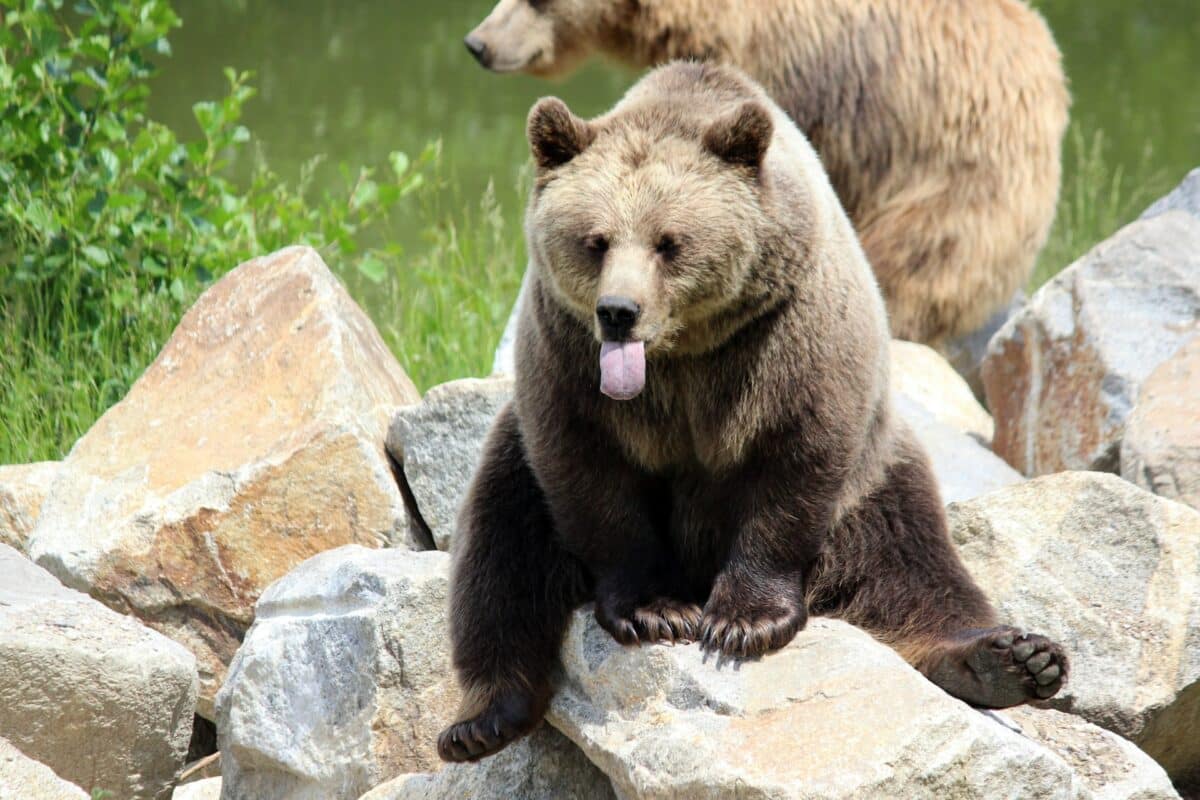
One thing every living thing has in common is the need to pass digested waste matter. Bears may be seen defecating in urban areas because of human interference with their habitat. They usually poop a few times a day, usually into the wind while standing up.
This behavior help keep predators such as skunks and bears away. Bears release a heavy scent when pooping, which allows them to use their spatial memories to navigate their territories better.
If a bear’s diet consists mainly of vegetation like fruits and berries, it will have smaller deposits than those that eat a more meat-based diet. Likewise, the frequency at which bears poop depends on both what they eat and where they live.
What Does Their Poop Look Like?
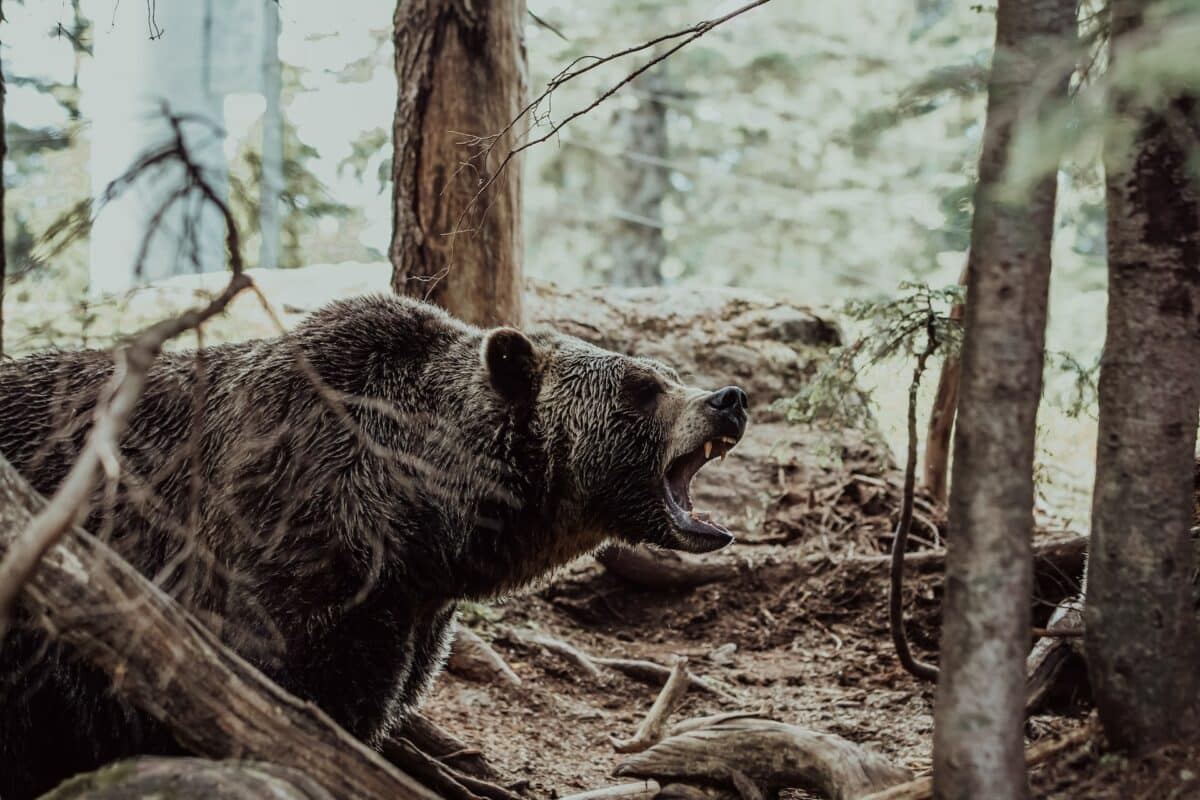
Bears are fascinating animals that inhabit many regions worldwide, living in various climates and habitats. Although everyone is familiar with the appearance of the bear, very few people are aware of what their poop looks like. Bear scat or droppings are generally sausage-shaped and typically measure 4 to 6 inches long by 1.5 to 2 inches in diameter.
Color-wise, their poo looks similar to dog feces and usually ranges from black to medium brown. Their droppings also contain much more vegetation than that of other carnivore species due to bears’ omnivorous diet.
It’s not uncommon to find pieces of grass, fruits, sedges, roots, and occasionally fur or bones due to their fondness for small mammals such as squirrels.
All in all, bear droppings can provide valuable insights into the inner workings of these majestic creatures!
Types of Bears and Their Poop Characteristics
Several species of bears exist worldwide, each with unique physical and behavioral characteristics. Their scat also reflect these differences.
Black Bear
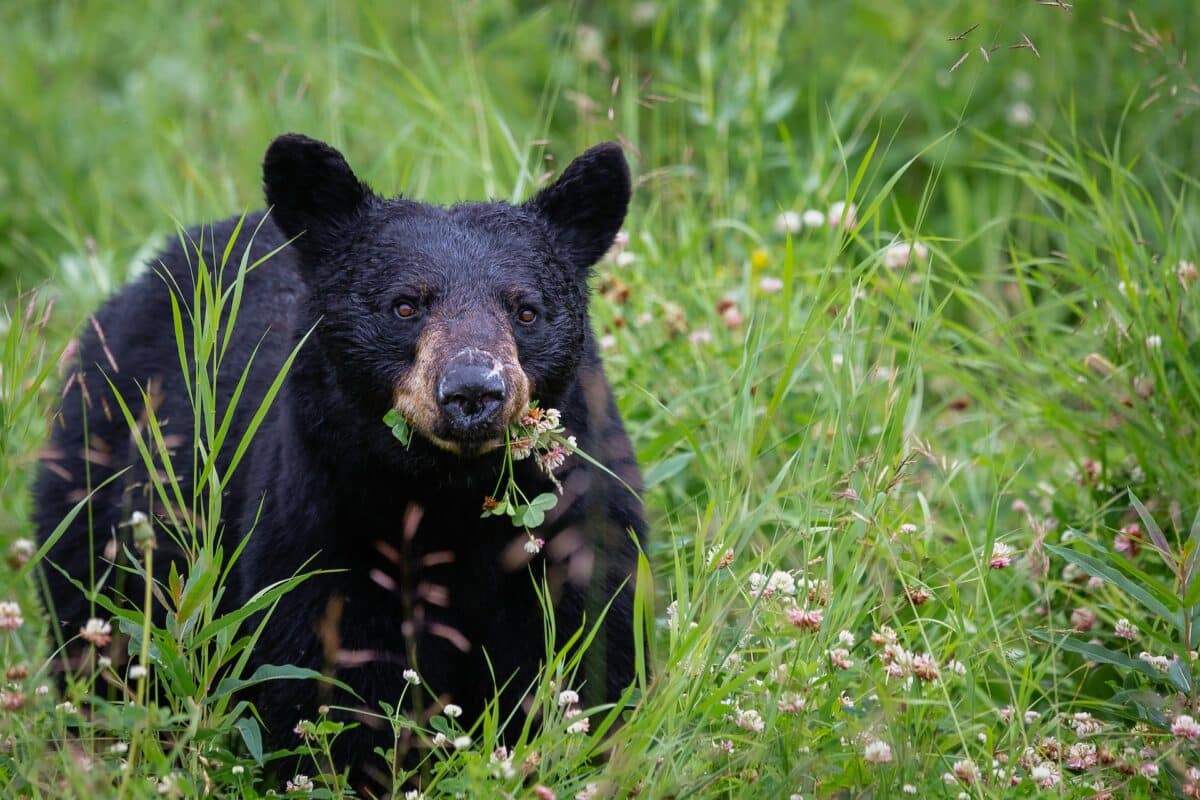
These bears are omnivores and eat both plants and animals, and their diet can vary greatly depending on the season and food availability. Black bear scat reflects their diverse diet and provides valuable information about their health and behavior.
Their scat is usually dark in color and cylindrical, with a diameter of about 1-2 inches. The consistency of the waste can range from firm to soft, depending on the type of food they have consumed. Black bear scat often contains plant material such as leaves, twigs, and berries, as well as the occasional insect or small mammal.
One of the most exciting aspects of black bear scat is its ability to reveal information about the bear’s health. Similarly, the presence of certain types of food in the scat can indicate that the bear is adapting to a new food source. Black bear scat is also a valuable tool for monitoring the population of black bears in a given area.
By counting the number of scats found in a specific area, wildlife biologists can estimate the number of bears in the area and track changes in their population over time. This information is critical for conservation efforts, as black bears are an essential component of many ecosystems and maintaining their balance.
Brown Bear
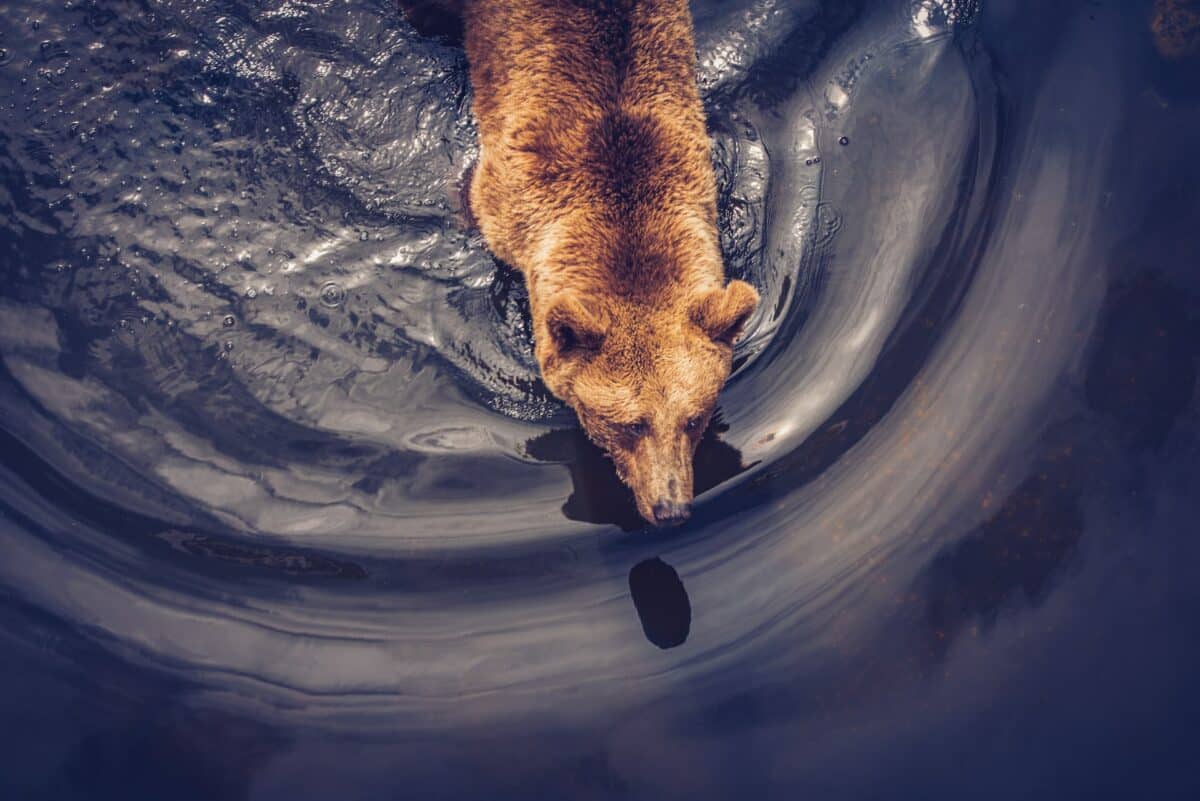
Brown bears are a larger species of bear present in North America, Europe, and Asia. Like black bears, brown bear scat provides valuable information about their health, behavior, and populations in a given area.
Brown bear scat is typically larger than black bear scat, with a diameter of about 2-4 inches. Likewise, the consistency of the waste can range depending on the bear’s current diet. Their scat often contains a mixture of plant and animal material, reflecting their diverse diet, which allows them to thrive in a wide range of habitats, from forests to tundra.
One of the most exciting aspects of brown bear scat is its ability to reveal information about the bear’s diet and health. For example, fish in the scat can indicate that the bear is feeding near a river or lake. Additionally, changes in the color or consistency of the scat can indicate that the bear is suffering from an illness or parasite.
By understanding the unique characteristics of brown bear scat, we can better appreciate the role brown bears play in their ecosystems and the importance of conserving their habitats for future generations.
Polar Bear

Their diet primarily consists of seals and fish, which their scat reflects. Polar bear poop is usually dark and cylindrical, with a slightly mushy texture. It often contains bits of fish bones and other inedible materials, which the bear consumes when eating its prey.
The scat can monitor the polar bear population’s health and track the bear’s diet and movements. Additionally, the presence of polar bear scat in an area can indicate the presence of seals and other food sources, which can guide wildlife management decisions.
Panda Bear

Panda bears are beloved creatures worldwide. Most of the time you can spot them munching on the one thing their diet consists of: bamboo. Although they’ve been exclusively eating bamboo for over two million years, their digestive system still isn’t able to digest this plant properly. In fact, they are only able to properly digest 17% of what they eat on a daily basis. This means that they have to eat huge amounts of bamboo to satisfy their nutritional needs. Naturally it follows that they also defecate huge amounts (roughly 40 times a day.)
Panda poop typically comprises firm pellets about 3 inches x 6 inches in size. Their scat usually contains undigested pieces of bamboo or other plant materials. It typically ranges from green to yellow in color. A yellow color indicates that the panda in question has been eating bamboo stems. In contrast, a green hue tells us that they’ve been consuming bamboo leaves.
Since they primarily eat bamboo shoots and leaves, panda poop thus often carries significant amounts of cellulose. This is another proof of how poorly they digest their favorite snack.
Bear Poop As a Source of Information
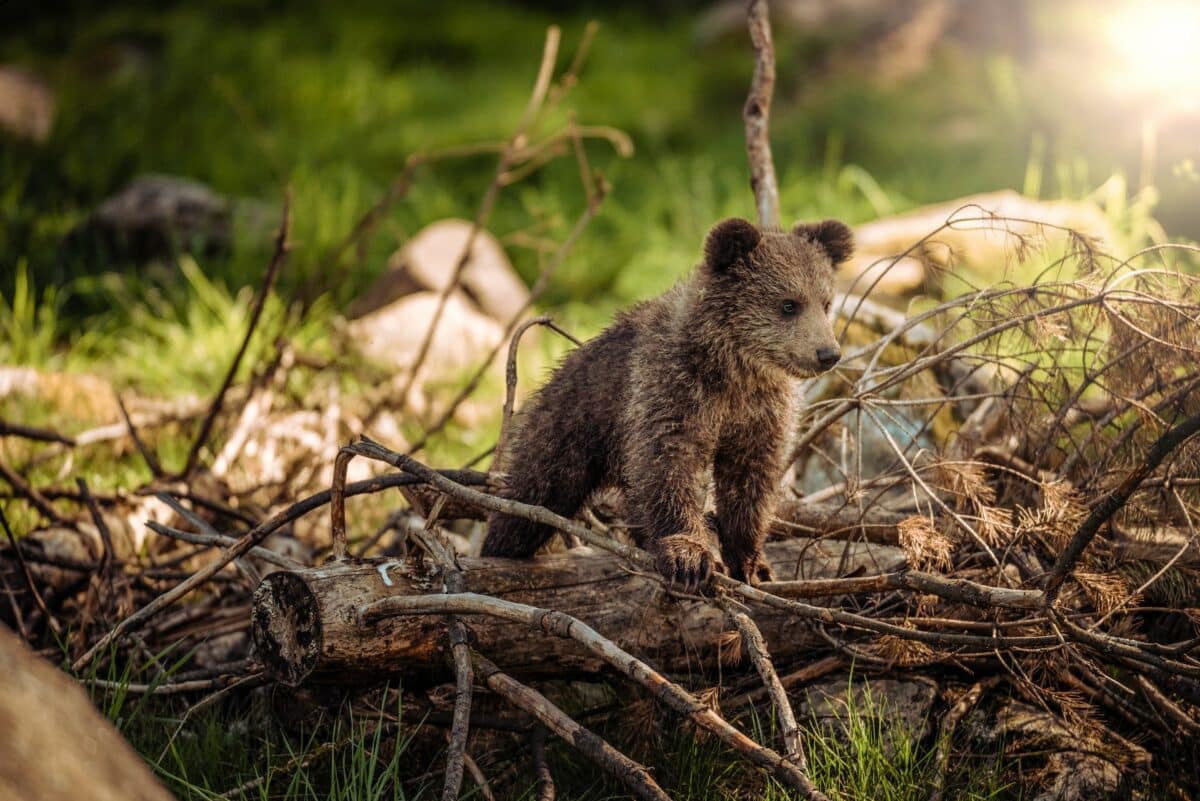
Bear scat can provide a wealth of information about bears and their environments. This information allows us to understand these fascinating creatures better and to manage human-bear interactions.
Diet Analysis
By analyzing the plant material in bear scat, scientists can determine what kinds of vegetation bears consume in a particular area. Similarly, the presence of animal material in their poop indicates what types of prey they hunt.
This information can be especially useful in tracking the distribution of prey species and understanding the impact of bears on their populations.
Health Analysis
In addition to providing information about a bear’s diet, their scat is an indication of its health. By examining scat for the presence of parasites or disease-causing organisms, scientists can monitor the health of bear populations and identify any health concerns – without ever having to get close to them. It can also be used to track the spread of diseases and parasites within a population and to understand the impact of human activities on bear health.
Genetic Analysis
Bear scat can also provide valuable information about bear genetics. By analyzing the DNA found in scat, scientists can identify individual bears and determine their relationship to other bears in the population. Understanding population genetics and monitoring changes in bear populations’ genetic diversity over time is necessary for bear research.
Impact of Bear Poop On the Environment
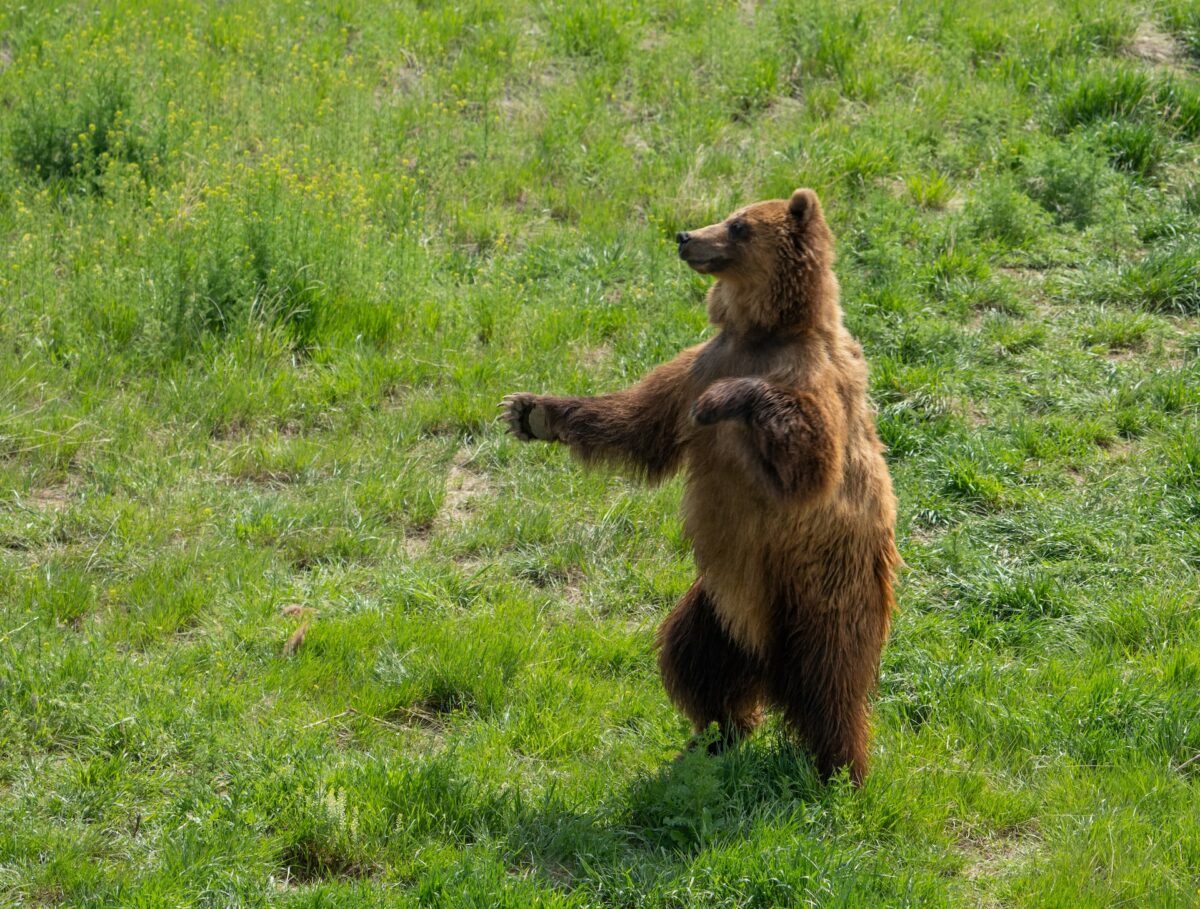
Bears play a significant role in their ecosystems, and their scat has both positive and negative impacts on the environment.
Nutrient Cycling
Bear scat contributes to nutrient cycling in their habitats by providing essential nutrients to the soil. As scat decomposes, it releases nutrients that plants can take up, contributing to soil fertility.
Plant Germination
In addition to nutrient cycling, bear scat can also play a role in plant germination. As scat is disposed of in various places by bears, it can help distribute seeds, contributing to the spread of vegetation. This process can also contribute to changes in the distribution and diversity of plant species in a given area.
Effects On Water Quality
While bear scat can positively impact the environment, it can also negatively affect water quality. When scat accumulates in large quantities, it can contribute to eutrophication. This is a process in which excessive nutrients in water lead to an overgrowth of aquatic plants and algae. It can harm water quality and marine life. Additionally, if scat is contaminated with pollutants such as pesticides, it can affect the water quality even more severely.
Management of Bear Poop In Human-Bear Interactions
In areas where bears and humans coexist, there will inevitably be bear poop as well. The only way to manage bear poop is to manage the bear population itself.
#1 Attractants Management
One way to reduce the risk of human-bear conflict is to manage attractants that may attract bears into residential areas. It includes appropriately disposing of garbage, securing bird feeders, and keeping pet food indoors. A reduction of food availability means that bears become less inclined to venture into residential areas, reducing the risk of conflict.
#2 Bear-Proofing Techniques
Another way to reduce the risk of human-bear conflict is to implement bear-proofing techniques. It can include using electric fencing, bear-resistant containers, and other measures designed to keep bears out of residential areas. By making it more difficult for bears to access attractants, the risk of human-bear conflict is reduced.
#3 Human-Bear Conflict Resolution
In some cases, bears may need to be relocated or euthanized to resolve human-bear conflict. However, these actions should only be taken as a last resort under established wildlife management protocols.
Relocation involves moving a bear from an area where it causes conflicts to a remote location where it is less likely to interact with humans. This approach is often used when a bear has become habituated to humans and shows no fear of them. However, it is essential to note that relocation can be stressful for the bear and may not successfully prevent future conflicts.
Euthanasia is a last resort in cases where a bear has become a threat to human safety and cannot be effectively relocated. This approach is highly controversial. It should only be considered by established wildlife management protocols and with the guidance of experienced wildlife professionals.
Can We Use Bear Poop As a Fertilizer?
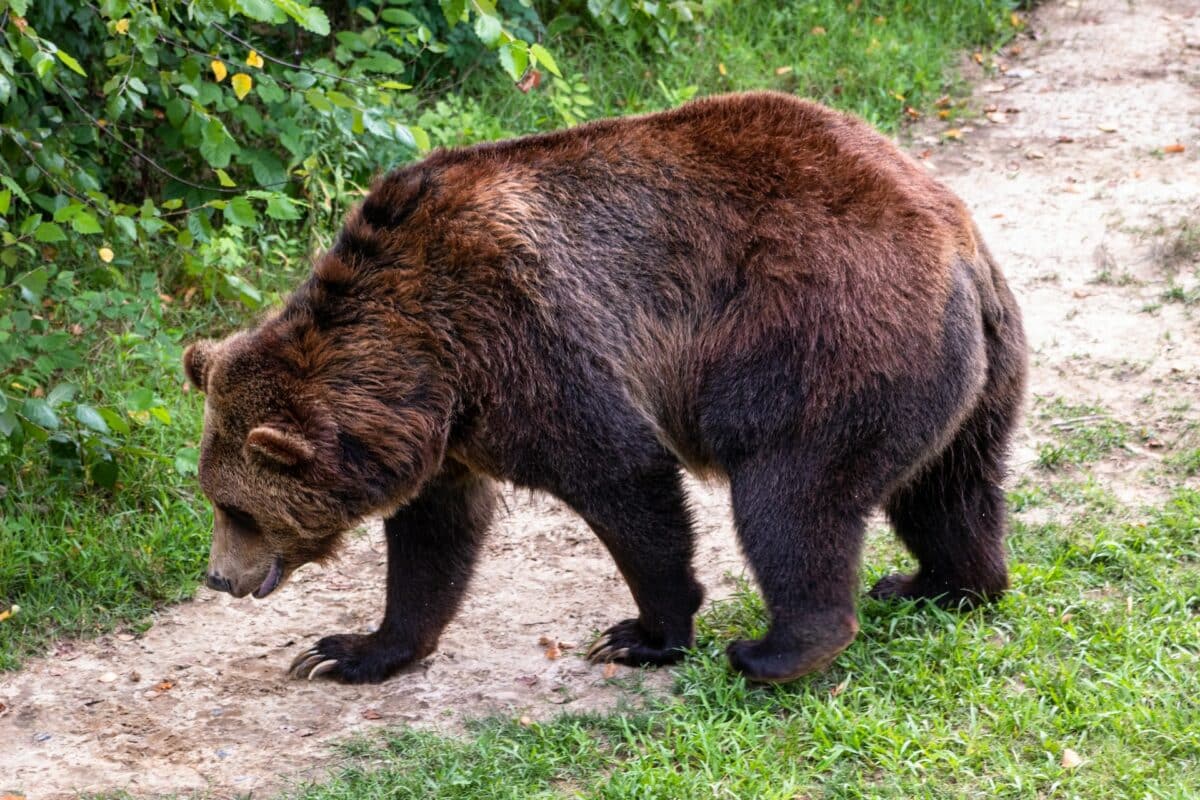
Yes, bear poop can be used as a fertilizer, particularly in areas where bears roam freely and defecate in the wild. It is ideal because bear scat has a high nitrogen content, which is a key nutrient for plant growth. As bear poop breaks down in the soil, it releases nitrogen and other nutrients that plants need to grow.
However, it is important to note that using bear poop as a fertilizer can carry risks. For example, bear scat can contain pathogens such as E. coli and Salmonella that can harm humans and other animals.
Therefore, it is not recommended to use bear poop as a fertilizer in vegetable gardens or other areas where food is grown. Additionally, it is important to practice proper hygiene and safety precautions when handling bear scat, such as wearing gloves and washing hands thoroughly after contact.
Key Points
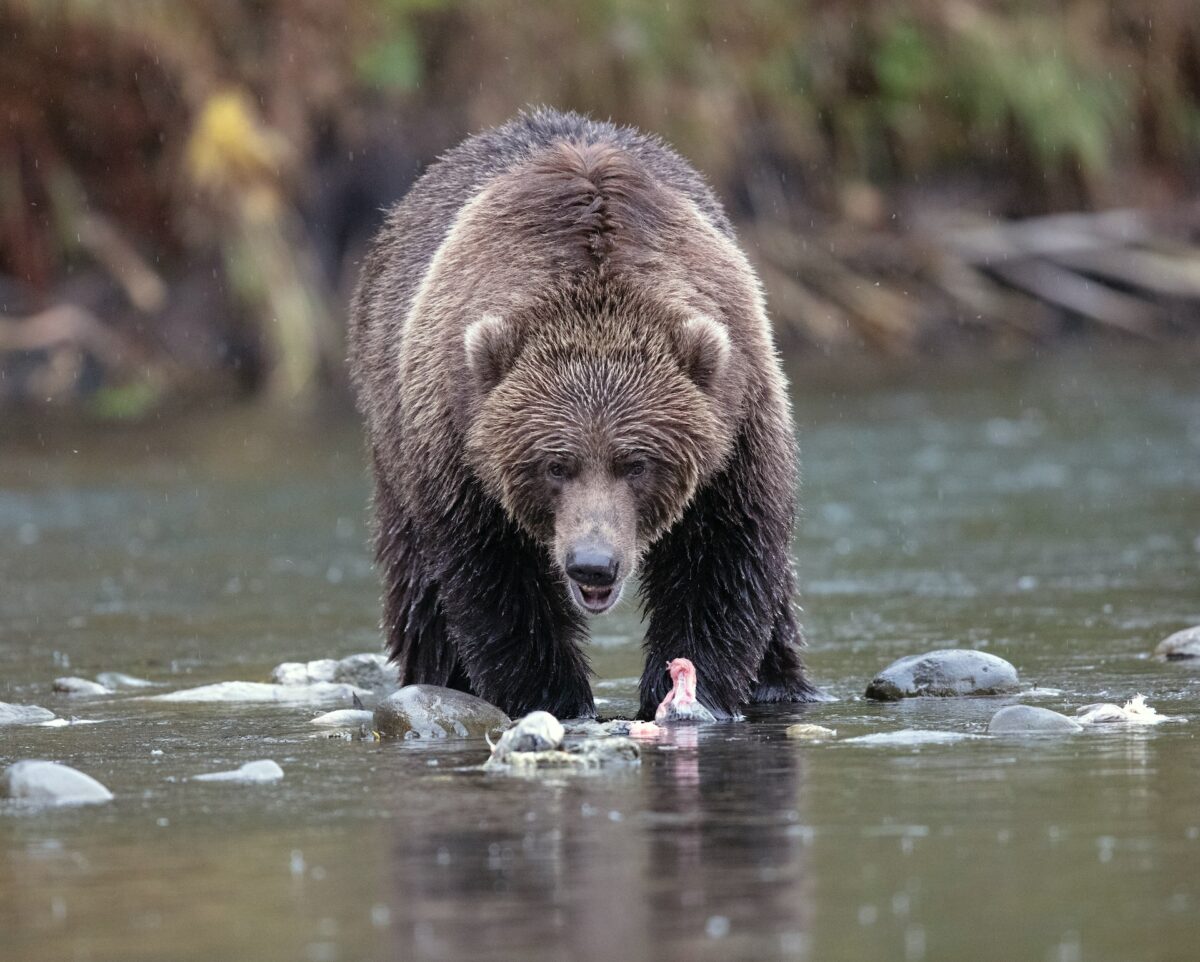
| Bear poop consists of various types of plant matter, such as leaves, stems, and fruit, as well as undigested meat, bones, and fur from animals the bear has eaten. |
| Interestingly, if a bear’s diet consists mainly of vegetation like fruits and berries, they will have smaller deposits than those that eat especially meat-based diets. |
| By analyzing the DNA found in scat, scientists can identify individual bears and determine their relatedness to other bears in the population. |
| Fish in bear poop can indicate that the bear is feeding near a river or lake. |
| Bear scat or droppings are generally sausage-shaped and typically measure 4 to 6 inches long and 1.5 to 2 inches in diameter. |
Closing Thoughts
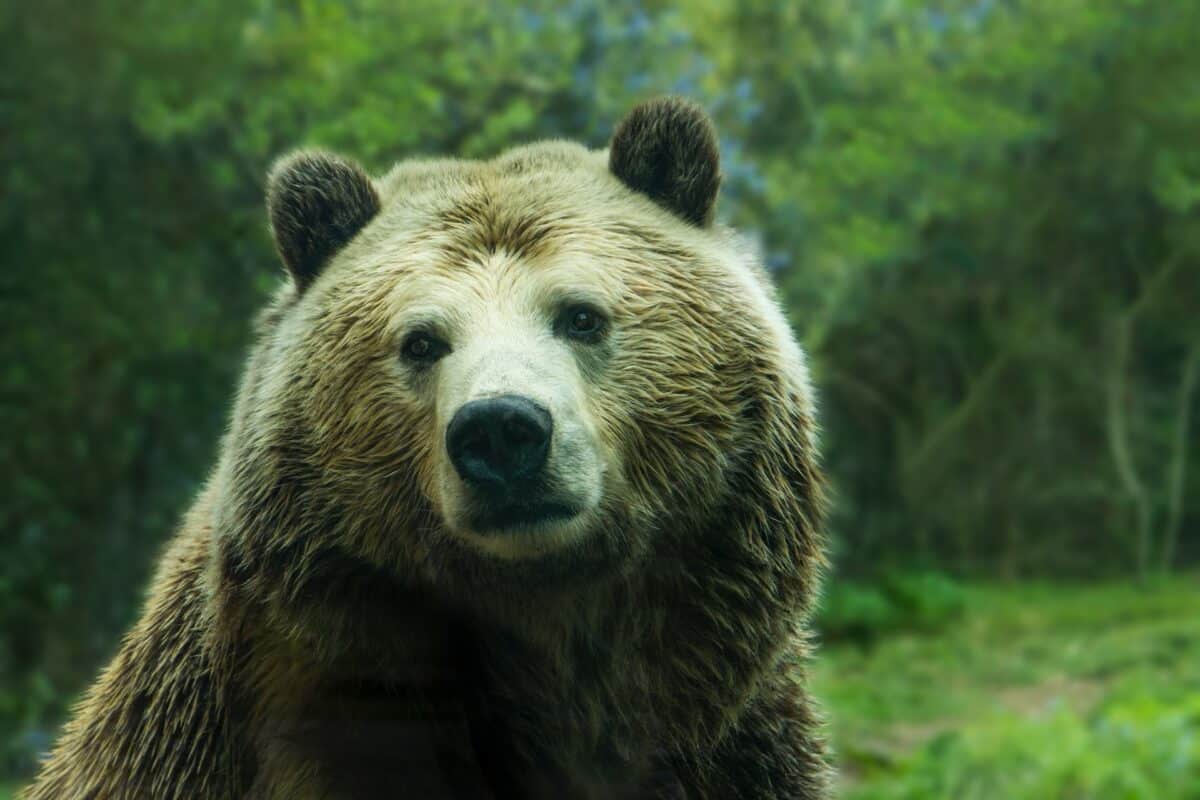
Bear scat can be a valuable source of information for scientists and wildlife managers. It provides numerous insights into the diets, health, genetics, and impacts of bear populations. Not only does it provide us with information about the bears in a certain area, but it also is very telling of the animals and plants consumed by the bear.
It is also notable that bear poop plays an important role in the various ecosystems bears inhabit. Their scat distributes the seeds of plants and provides the soil with nutrients, both of which are highly beneficial for the area’s plant biodiversity.
It is essential to approach bear management with a balanced perspective, considering the benefits and drawbacks of each management strategy and taking a science-based approach that prioritizes the health and well-being of both bears and humans.
Join our Forum for free today!


